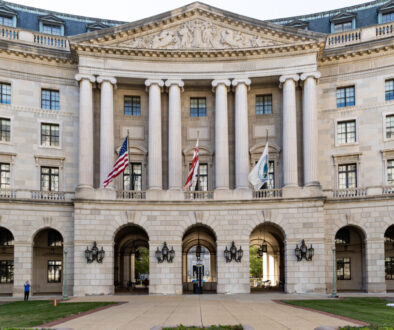PG&E critics eye pressure on California PUC nominees to advance call for utility reform
Clean energy advocates are urging sweeping reform of California’s monopoly utility Pacific Gas & Electric (PG&E) and claiming decades of misguided power investments that hiked ratepayers’ energy bills, and they are looking to a state Senate nomination fight to advance their call.
During a Thursday press briefing, representatives from the Environmental Working Group (EWG), former California Public Utilities Commission (CPUC) President Loretta Lynch, and energy expert Bill Powers said PG&E has wasted billions on old, centralized power systems, tried to stymie clean energy like rooftop solar, and passed the costs of destructive wildfires it caused on to ratepayers via higher bills.
“The utility business model has failed miserably and PG&E is an example of that,” said EWG’s Senior Energy Policy Advisor Grant Smith. “Why is it failing? Lack of accountability,” he said, noting that most grid transmission investments in California are not regulated.
Loretta Lynch, who served as CPUC president from 2000 to 2002, said the relationship between PG&E and the commission is too close, and that internal discussions between the two are often shrouded in secrecy. The lack of public oversight makes it easier for the power company to win necessary CPUC approval for its investment plans, even if they will hike bills, she said.
As part of the press briefing, EWG unveiled a four-part investigation faulting years of “failures” by the utility, including spending millions on fossil fuels that exacerbate the climate crisis, poor planning that led to wildfires that destroyed homes and claimed lives, and opposition to advancing clean energy, including fighting the state’s popular rooftop solar program.
According to CPUC data included in the report, between 2018 and 2020, PG&E’s electricity distribution costs rose by roughly $3.5 billion, with the company estimating $4 billion annually through 2026. It will spend at least $25 billion in the coming years to bury 10,000 miles of power lines, all of which will be passed on to its customers through steep rate hikes, the report says.
The report, written by Smith, also outlines a plan for overhauling PG&E that includes California imposing stricter regulatory oversight of the utility’s energy infrastructure investments, expanding access to solar power for working class communities, and preventing PG&E from having the CPUC quietly approve plans for shifting shareholder risks to ratepayers.
Another recommendation in the report calls for CPUC rule changes to allow third parties to pitch alternative energy investment plans, and for PG&E to be forced to justify why its approach is preferable – something critics on the call said does not currently happen.
“We hope this investigation will finally spur the state to rein in the out-of-control utility and force real reform within the company. Long-suffering Californians, desperate for relief from ever-increasing energy bills, thanks to PG&E, deserve no less,” said EWG President and California resident Ken Cook in a statement.
But PG&E is pushing back, telling The New Lede in a statement that it is already working to promote clean energy sources, dismissing EWG’s proposals as not being the best approach.
“PG&E has been a leader in helping California achieve its ambitions climate policy – with nearly 93 percent of the energy we supply customers coming from greenhouse gas-free sources last year – and has worked with regulators and legislature to further these goals for two decades,” said utility spokesperson Lynsey Paulo.
“PG&E is also a national leader in supporting rooftop solar installations, electric vehicle infrastructure and adoption, and energy storage. For these reasons, and many others, this proposal is not the optimal solution that will address the challenges ahead and serve the long-run interests of customers, communities, the economy and our state,” Paulo said.
Putting pressure on PG&E
Lynch said “we depend on our regulators being a watchdog or a guard dog,” but the CPUC is failing in that respect – and that it needs to ramp up its scrutiny of PG&E’s operations.
“Whenever PG&E can make a buck off their customers and pad their profits, they will do that,” said Lynch. As an example, she cited the CPUC’s recent tentative decision to approve a PG&E plan for hiking rooftop solar fees. Opponents said the plan would decimate the state’s popular solar program, stalling clean energy progress and boosting profits for the utility.
Following prolonged public outcry, the CPUC shelved the initial approval and is still reviewing the proposal – and Lynch suggested such advocacy campaigns could help advance reform of PG&E.
Lynch called for the public and the press to step up their questioning of the power company, to build support for overhauling it. One opportunity, she said, could be the upcoming California Senate confirmation hearings for two nominees to the CPUC.
Gov. Gavin Newsom (D) has appointed two CPUC members – Commissioner John Randolph and President Alice Reynolds – to six-year terms, and the Senate has until January either to confirm or reject them. Lynch said senators in hearings on the nominees could press them about alleged flaws in PG&E’s past, present and future, and whether they support reform.
Reform could include internal changes at PG&E to focus more on decentralized power and clean energy, but also CPUC procedural changes and, potentially, legislation that addresses many issues, ranging from power investments to planning transparency, speakers on the call said.
For example, California Assemblymember Al Muratsuchi (D-Torrance) introduced a bill in February that would mandate the CPUC make its proceedings “as transparent to the public as reasonably possible,” and require that the commission comply with state public records law.
ABC10 is suing to try and force release of communications between the CPUC and Newsom’s office under that law, but they have yet to be released.
Lynch said the lawsuit backs PG&E’s critics’ claims about important energy choices for California’s future being made in secret. “What do they have to hide?”
The CPUC did not respond to a request for comment by press time.



